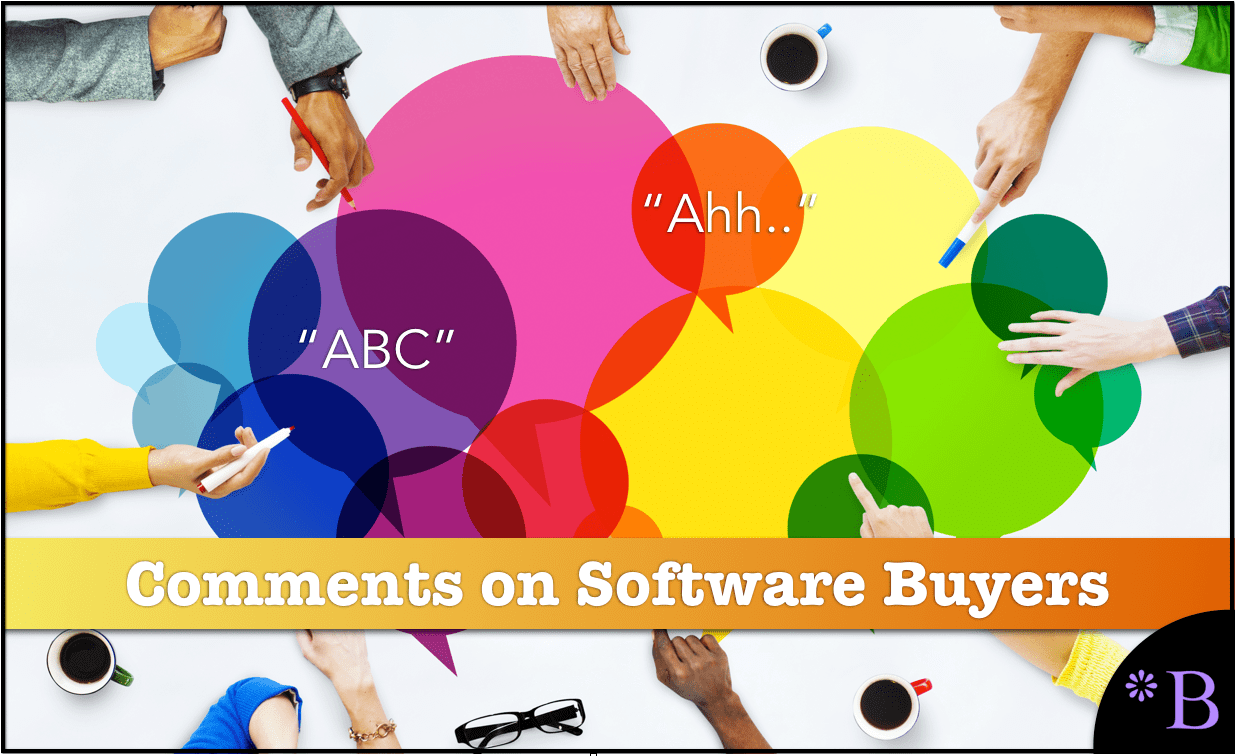Comments on Brightwork Articles on Consulting Firms and Software Buyers
Executive Summary
- This article contains comments from the articles on consulting firms and software buyers.

Introduction
These comments are in response to the articles on SAP HANA.
Comment #1: John Hawks
Not that we’ll start a revolution for upgrades but I stand in full agreement with the remarks regarding the dated materials and products touted by large consulting companies. I can see you are a real practioner and lover of the I.T. trade. The problem is the industry is still racked by people who are not I.T. people and will trade on any bull that they can shovel and there are so many dumb buyers who do not have significant experience to know the difference.
My rant comes from statements I made back in 1986 and 1987 when playing in two different Big 8 consulting firms. I was and continue to be astounded that the proto-typical buyer of I.T. goods and services is more swayed by an advertisement than a seasoned practioner. I also have to agree that because a company makes a statement about a product or procedure, it is NOT state of the art. Only a fool would buy that immediately. When companies are going out of business, they often make open statements about being state of the art. But, business is business and the people who write checks for goods and services will continue to believe whatever they are told by a vendor. Wow. A vendor thinks for the client and sends them an invoice. Does it get better than that? Please, bend over, it’s state of the art.
So true Jon.
I find it is interesting how difficult it can be to get to the logical underpinnings of design. This is because the response is normally, “the executives have decided its the direction,” or “other companies seem to be having success with it,” (based upon usually magazine articles produced by journalists who have never worked in the subject matter and repeat verbatim what is stated by the executives at the company).
I was recently asked about a faux forecasting approach that is becoming popular. My analysis leads me to conclude that this software/method is not a way to improve anything real at a company, but is designed to allow demand planning departments to falsify their forecast accuracy, as we cover in the article Demand Shaping and Demand Sensing.
One consultant I was working with stated that company XYZ was reported to have success with the approach. I had just come from that exact company, and my experience with them was they neither their executives nor their IT group knew anything about forecasting, and this multi-billion dollar company could not do the most elementary forecasting functions. Actually, very very few companies can be used as models for forecasting excellence. Most companies do a horrible job of taking advantage of systems to improve their forecast. However, if a big consulting company does something, or a big client does something, that seems to be sufficient evidence that other people should do it as well. I think the first question needs to be..
“does it make sense?”
..and secondly..
“have we tested it?”
The fact that a consulting company or a client did this or that really means nothing. Very few executives call in journalists into their office to report that they completely bombed on their IT implementation because they were ripped off by Accenture who lied to them about what software could do for them and this caused them to miss their quarter.
This is called reporting bias, and obviously must be adjusted for.
Comment #2: From Dave Clemmons
Deloitte also falsifies CMMI compliance in IT as shown in the CA court case system. Don’t think their other CMMI clients in SI consulting have caught on.
Would You Like to Comment and Have it Added to This Thread?
Just provide your comment in the chatbox in the lower left of this screen.